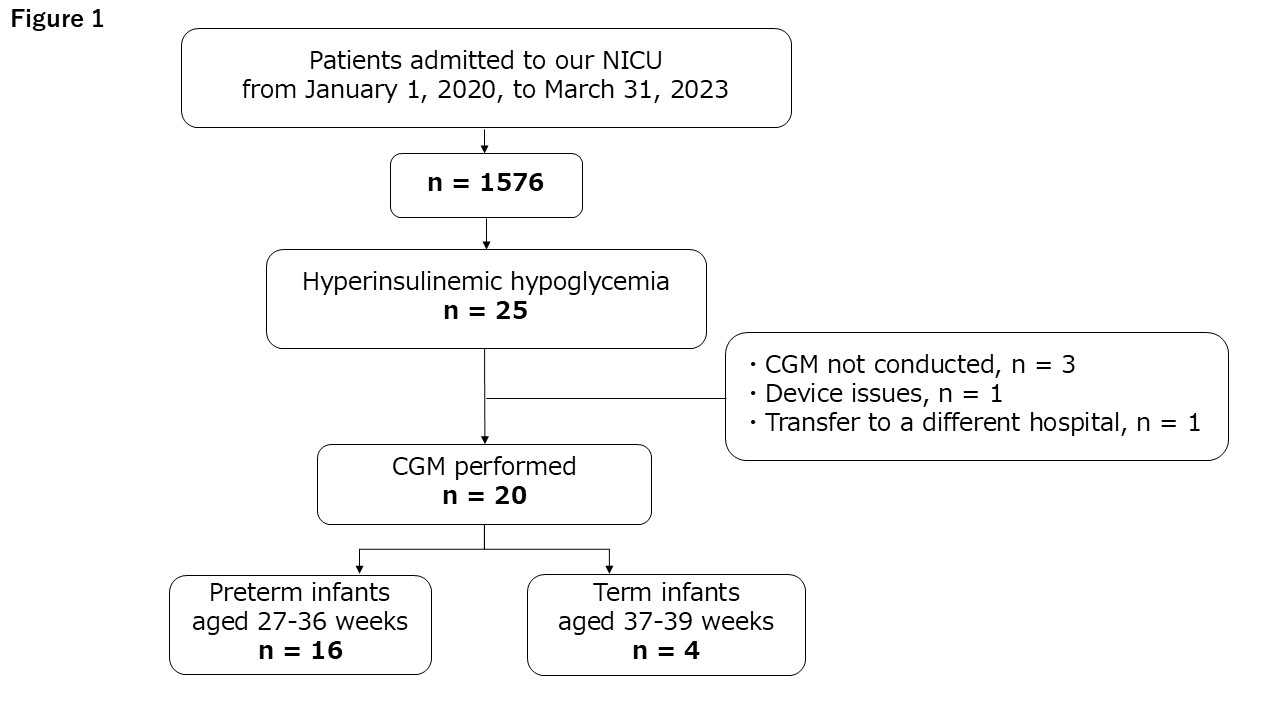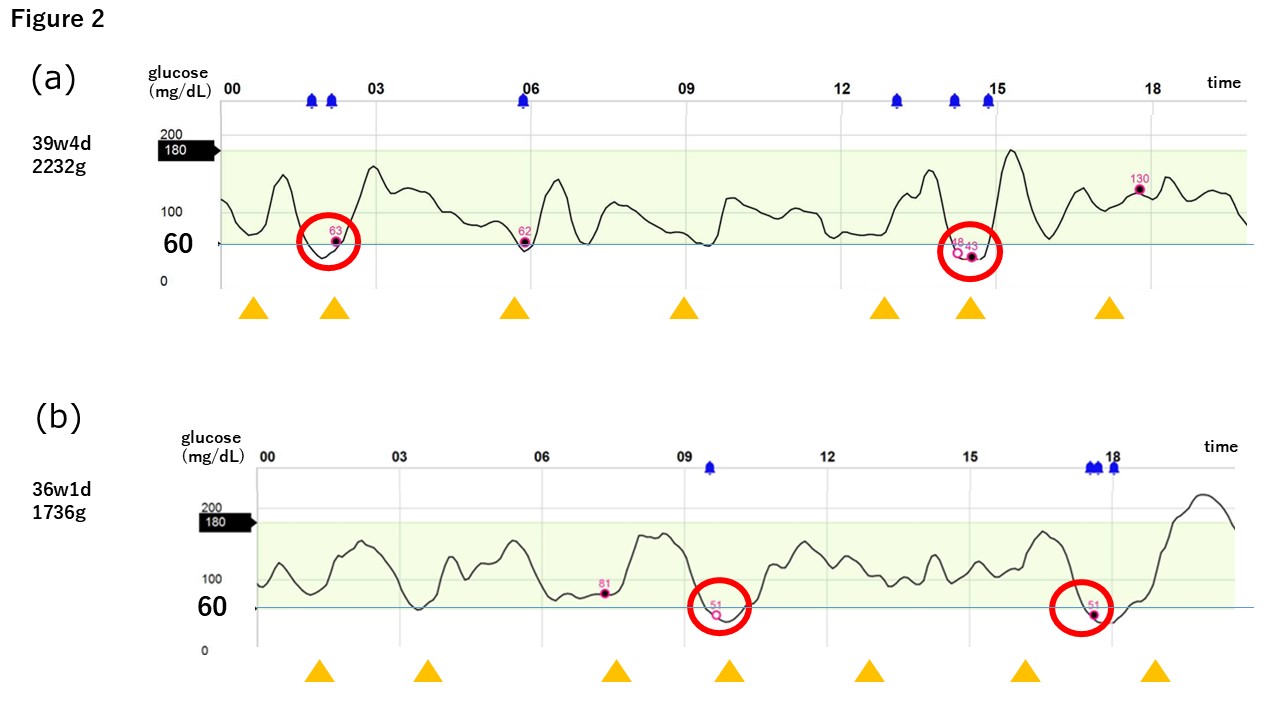Neonatal Fetal Nutrition & Metabolism 4
Session: Neonatal Fetal Nutrition & Metabolism 4
642 - Self-Monitoring of Blood Glucose does not Adequately Detect the Occurrence of Low-Glucose Events in Newborns with Hyperinsulinemic Hypoglycemia
Monday, April 28, 2025
7:00am - 9:15am HST
Publication Number: 642.6232
Fumie Hojo, Japanese Red Cross Aichi Medical Center Nagoya Daini Hospital, Nagoya, Aichi, Japan; Shin Kato, Japanese Red Cross Nagoya Daini Hospital, Nagoya, Aichi, Japan; Masanori Kohwaki, Japanese Red Cross Aichi Medical Center Nagoya Daini Hospital, Nagoya, Aichi, Japan
- FH
Fumie Hojo
fellow
Japanese Red Cross Aichi Medical Center Nagoya Daini Hospital
Nagoya, Aichi, Japan
Presenting Author(s)
Background: In children with hyperinsulinemic hypoglycemia (HH), persistent and recurrent hypoglycemia during the neonatal period and infancy is directly associated with poor neurological prognosis. Therefore, early diagnosis and therapeutic interventions are essential. However, there is limited information on the blood glucose level dynamics in newborns, and it is unclear whether self-monitoring of blood glucose (SMBG) is sufficient to detect low-glucose events.
Objective: We aimed to test whether SMBG can detect a low-glucose event, defined as glucose level < 60 mg/dL , as effectively as continuous glucose monitoring (CGM) in patients with HH treated with diazoxide.
Design/Methods: This retrospective observational study was approved by the Institutional Review Board of Japanese Red Cross Aichi Medical Center Nagoya Daini Hospital (#9022). Among the 1576 patients admitted to our tertiary-level neonatal intensive care unit between January 1, 2020, and March 31, 2023, newborns with HH who underwent CGM and were treated with diazoxide were evaluated (Figure 1). The CGM device was placed on the patient’s upper thigh. The perinatal background, duration of CGM, number of low-glucose events, and glucose level trends were examined. Descriptive statistics were used to summarize the patients’ backgrounds and CGM measures. All continuous variables are presented as median (range) unless otherwise specified.
Results: We included 20 patients with a gestational age and birth weight of 35.6 (27.1– 39.6) weeks and 1743 (603–3380) g, respectively. The patients were diagnosed with HH at the age of 13.5 (4–107) days (Table 1). Diazoxide was administered at 14 (7–107) days of age; the maximum dose was 5.7 (4.8–12) mg/kg/day. CGM was performed for 6 (3–13) days. Among the 14 (70%) patients who experienced low-glucose events, 10 patients experienced sudden hypoglycemia shortly after feeding (Figure 2). Low-glucose events detected by CGM could not be detected by SMBG in 9 patients, resulting in subclinical hypoglycemia (incidence: 45%). There were no serious adverse reactions; hence, drug discontinuation was not required in any patient.
Conclusion(s): SMBG did not adequately detect low-glucose events in patients with HH treated with diazoxide. Furthermore, low glucose levels ( < 60 mg/dL) may occur shortly after feeding in newborns with HH. Multicenter studies are warranted to accumulate cases of newborns with HH monitored using CGM to evaluate the frequency and threshold of low-glucose events to prevent adverse neurological outcomes.
Figure 1: Flow chart of the study

Table 1: Patient characteristics
.jpg) Values are shown as median (range).
Values are shown as median (range).Figure 2: Cases of sudden low-glucose events shortly after feeding.
 Yellow triangle: feeding; blue bell: low glucose level alert during CGM; pink point: low glucose level during self-monitoring of blood glucose; red circle: low-glucose event.
Yellow triangle: feeding; blue bell: low glucose level alert during CGM; pink point: low glucose level during self-monitoring of blood glucose; red circle: low-glucose event.* Self-monitoring of blood glucose (SMBG) was performed at least three times a day (at 7, 16, and 10 PM), and additional SMBG was performed when hypoglycemia alarms were triggered during CGM.

